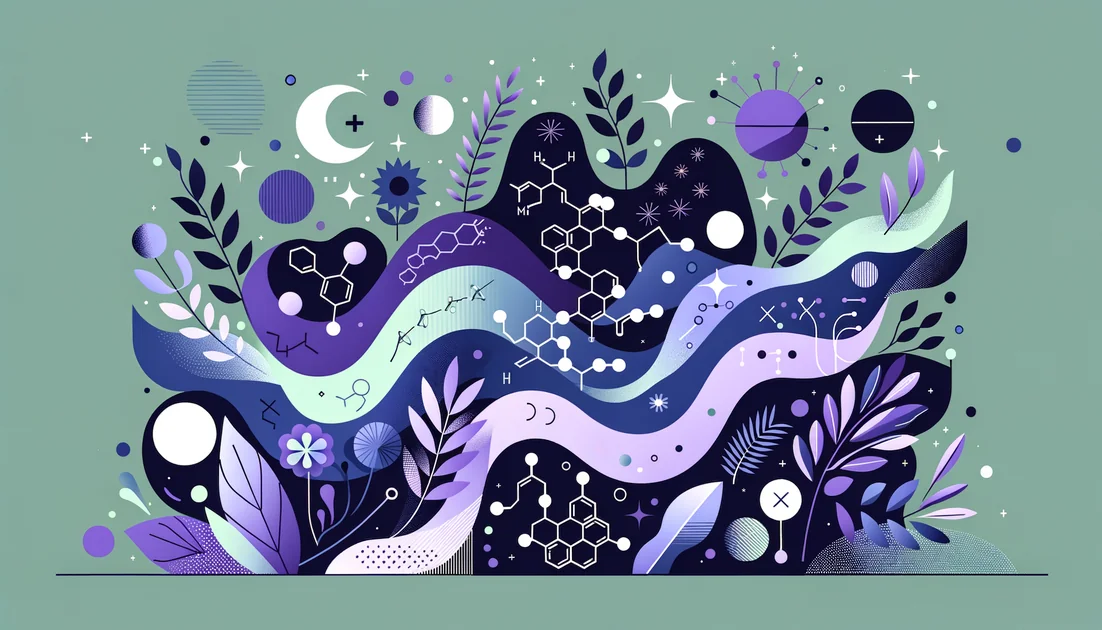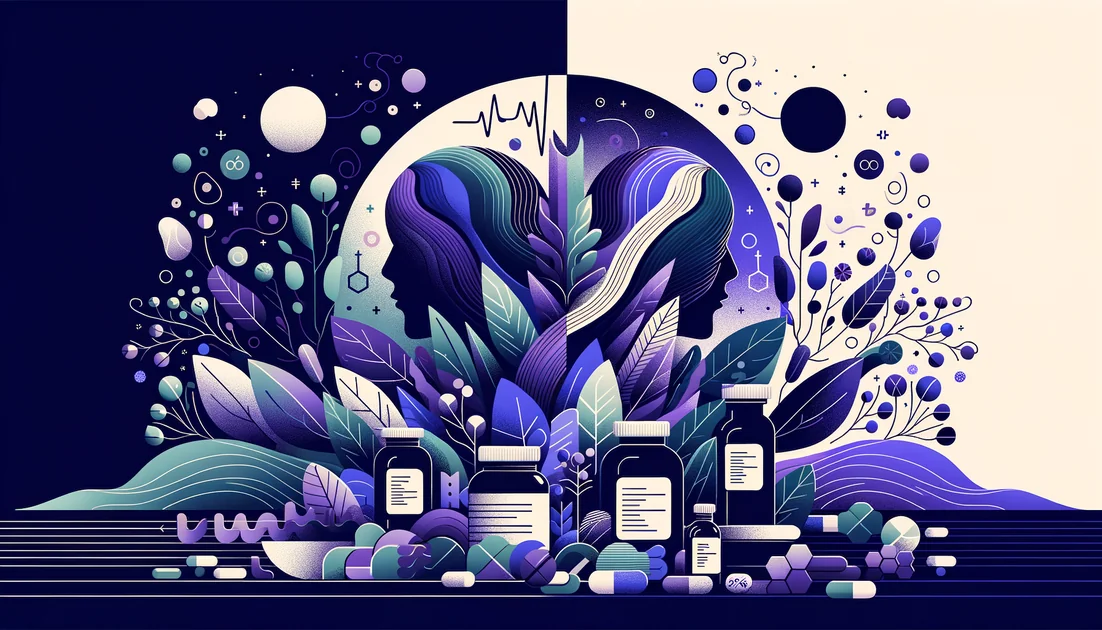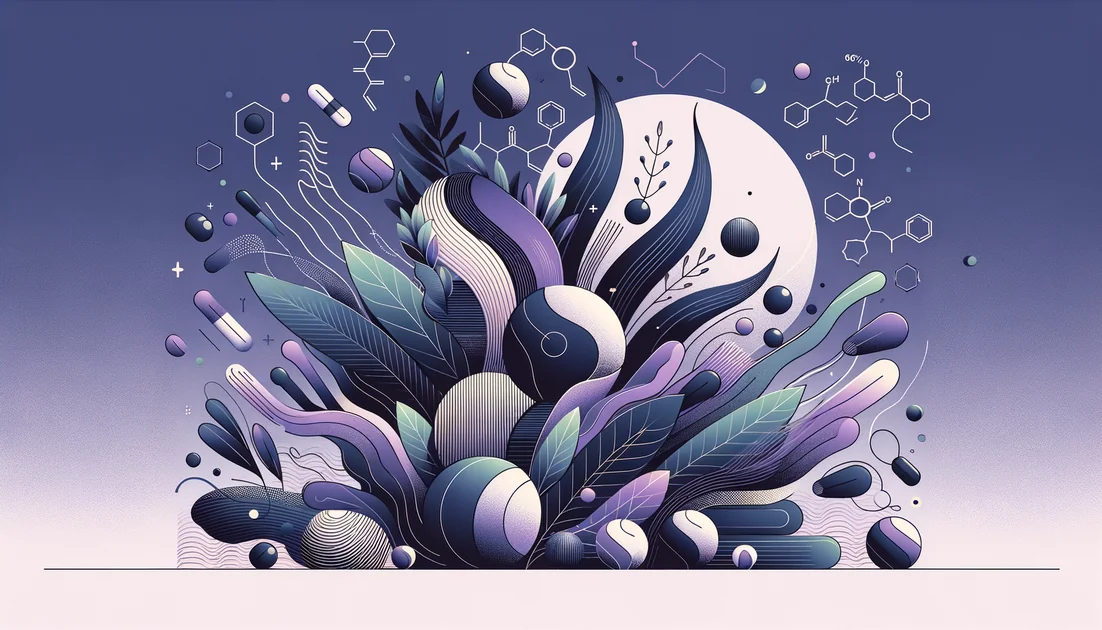
The Smallest Amino Acid With a Big Story: How Glycine Quietly Shapes Sleep, Mind, and Aging
You stir a cup of broth, that familiar comfort from kitchens around the world. Hidden in its silkiness is glycine—the simplest amino acid—once called "sugar of gelatin." Two centuries after a French chemist boiled it out of animal gelatin, this tiny molecule keeps showing up where big human questions live: Why can't I sleep? Why does my energy fade with age? Why do some psychiatric symptoms refuse to budge?[1]
- Evidence
- Promising
- Immediate Effect
- Yes (sleep benefits within hours of first dose). → Sleep: first night; psychiatry adjunct and aging markers: about 2–16 weeks in trials.
- Wears Off
- Sleep effects stop when not taken; GlyNAC benefits declined within ~8–12 weeks after stopping in one trial.
From "gelatin sugar" to sleep switch
In 1820, Henri Braconnot isolated a sweet-tasting compound from gelatin and set off a curious lineage: first "glycocoll," then simply glycine, from the Greek for "sweet."[1] Today, glycine is no one's fad—it's a workhorse your body already makes and uses every minute. But when researchers gave a small extra nudge at bedtime, something striking happened. In a sleep lab study of adults dissatisfied with their sleep, 3 grams of glycine taken within an hour before bed improved ratings of sleep quality, shortened the time to fall asleep and reach deep, slow-wave sleep, and didn't distort the natural pattern of the night.[2] Volunteers felt less daytime sleepiness and performed better on memory tasks afterward.[2] In a separate experiment simulating late-night crunch time, the same 3-gram dose taken before three nights of partial sleep restriction reduced next-day fatigue.[4] One proposed reason reads like an engineer's blueprint for sleep onset: glycine gently opens the body's heat-release valves—more blood to the skin, slightly cooler core—helping the brain "decide" it's time to sleep.[3] As the authors put it, "The decline in the core body temperature might be a mechanism underlying glycine's effect on sleep."[3]
Two faces in the brain: calming brake and subtle key
Glycine carries two passports in the nervous system. In the spinal cord and brainstem it acts as an inhibitory signal—a steadying hand on overactive circuits. In the cortex it plays a different role: a required co-pilot for NMDA receptors, the sites that help neurons learn and adapt. That second passport led scientists down an unexpected path in schizophrenia, where "negative" symptoms—apathy, low motivation, blunted affect—often resist standard drugs. Across randomized trials analyzed together, giving glycine (or its cousins D-serine or sarcosine) alongside antipsychotics produced a moderate improvement in negative symptoms; positive symptoms like hallucinations did not change.[6] Early high-dose glycine trials (about 0.8 g per kg of body weight per day, in divided doses) echoed this signal.[7][8] But there was a twist: when patients were on clozapine—the atypical antipsychotic famous for helping treatment-resistant cases—adding glycine didn't help and may even have blunted clozapine's benefits in some studies.[9][10] The likely explanation is receptor traffic control: clozapine already tunes the glutamate system so that extra glycine can't add much—and sometimes gets in the way.
The quiet deficiency paradox
By textbook rules, glycine is "non-essential" because we can synthesize it. Yet in the real world, people with obesity and type 2 diabetes consistently show lower blood glycine, and higher levels track with better insulin sensitivity.[5] One review summarized bluntly: "Circulating glycine levels are consistently low in patients with T2D."[5] Why might that be? Collagen—our structural fabric—consumes vast amounts of glycine for constant repair. Biochemists have argued our innate production may fall short of full-body needs, especially for connective-tissue turnover.[16] Traditional dishes rich in gelatin and collagen—think aspics, bone broths, slow-simmered cuts—quietly supplied more glycine; modern analyses show diets can incorporate substantial collagen (and thus glycine) without crowding out indispensable amino acids.[17]
Aging, mitochondria, and the GlyNAC storyline
Aging cells often look like cities during a power outage: stressed, short on antioxidant capacity, and with faltering "power plants" (mitochondria). Glycine teams up with N-acetylcysteine (NAC) to make glutathione—the body's primary in-cell antioxidant. Could topping up these two precursors restore power? In a placebo-controlled randomized trial of older adults, 16 weeks of GlyNAC reversed glutathione deficiency, lowered oxidative stress, improved measures of mitochondrial function, and nudged physical function—gait speed, strength—toward youthful values.[11] A two-week dosing study in healthy older volunteers showed that 2.4 to 7.2 grams per day (glycine:NAC 1:1, divided twice daily) safely improved glutathione and oxidative-damage markers, mapping a dose range used in research rather than consumer hype.[14] The lead investigator put it simply: "Energy is the currency of life and is generated by mitochondria."[12] In mice, the same combination even extended lifespan, fueling larger human studies to come.[12][13] The narrative isn't tidy. In people with HIV, an open-label trial found multiple improvements after 12 weeks of GlyNAC—then a slide backward after eight weeks off, suggesting benefits depend on continued supply.[15] And in a high-fat-diet mouse model, stand-alone glycine unexpectedly worsened fasting glucose and liver glucose output despite helping some cellular signals—a reminder that petri dishes don't vote, whole bodies do.[18]
How people are using glycine today
Sleep: 3 g taken 30–60 minutes before bed improved perceived sleep quality and shortened time to sleep and deep sleep in small trials, without next-day sedation—and may reduce fatigue during brief sleep restriction.[2][4]
Adjunct in psychiatry: High-dose glycine has been studied to complement antipsychotics for persistent negative symptoms. It showed benefits with several drugs but not with clozapine; any psychiatric use should be physician-directed.[6][7][9]
Aging research: GlyNAC (glycine + NAC) has improved glutathione status and markers of mitochondrial function and physical performance over 2–16 weeks in early trials; this is a research-grade combo, not plain glycine alone.[11][14]
What this means for a health-conscious life
Glycine feels less like a magic bullet and more like a missing screw—small, cheap, and surprisingly important where systems need alignment. For sleep, it acts fast and gently, a nudge toward the body's own descent into cool, stable slumber.[2][3] For psychiatric add-on therapy, it's a precise tool with conditions and caveats.[6][9] For aging biology, the GlyNAC data are exciting but young; markers and function moved in the right direction, yet large, longer trials powered for hard outcomes are still ahead.[11][14] Two closing cautions sharpen the picture. First, if you take clozapine, don't add glycine without your psychiatrist; trials show no benefit and possible interference.[9][10] Second, in metabolism, context matters: low glycine in insulin resistance doesn't guarantee that supplementing glycine alone helps every metabolic pathway, as the mouse paradox shows.[5][18]
"Energy is the currency of life and is generated by mitochondria."[12] The smallest amino acid keeps pointing us back to the largest pattern in health: systems thrive when their basic parts are supplied and balanced. Glycine's story isn't about outsourcing your biology; it's about giving your biology what it recognizes.
Key takeaways
- •In adults with sleep complaints, 3 g glycine 30–60 minutes before bed improved subjective sleep quality, shortened time to fall asleep and to deep sleep, and preserved normal sleep architecture.
- •Next day, participants reported less sleepiness and performed better under sleep restriction, suggesting glycine supports alertness without sedative hangover.
- •A proposed mechanism is enhanced heat loss and a drop in core body temperature, aligning with the body's natural sleep initiation signals.
- •As an adjunct in psychiatry, glycine modestly improved negative symptoms when added to some antipsychotics, but not clozapine; such use requires clinician oversight (~0.8 g/kg/day in studies).
- •For aging biology, GlyNAC (glycine + NAC) improved glutathione status, mitochondrial function, oxidative stress, and physical function in older adults; note this is not plain glycine and was dosed 1:1 in studies.
- •Practical guide: take 3 g at bedtime for sleep; daytime dosing didn't cause acute sleepiness in studies. If you have diabetes, monitor glucose and discuss metabolic effects with your clinician.
You might also like
Explore more of our evidence-led investigations, comparisons, and guides across every article style.

Nature's Truth
Nature's Truth: Retail leader with selective third-party certifications—and a transparency gap

NAD+ (direct NAD+ therapy) vs NMN (nicotinamide mononucleotide)
For most people seeking a convenient, lower-cost, evidence-aligned way to support NAD biology, choose NMN orally. Reserve NAD+ IV for supervised, short-term boosts when you accept higher cost, procedure risks, and limited controlled efficacy data. [1][4][10]

Best for focus
L-theanine (100–200 mg) + caffeine (40–160 mg)

Aloe Vera
A single green spear sits on your kitchen counter—cooling gel inside, cautionary stories outside. How did one leaf become both a sunburn staple and the subject of cancer warnings?


Tocotrienols
The stealthier cousins of vitamin E—built with springy tails that move differently in cell membranes and behave differently in your body.


